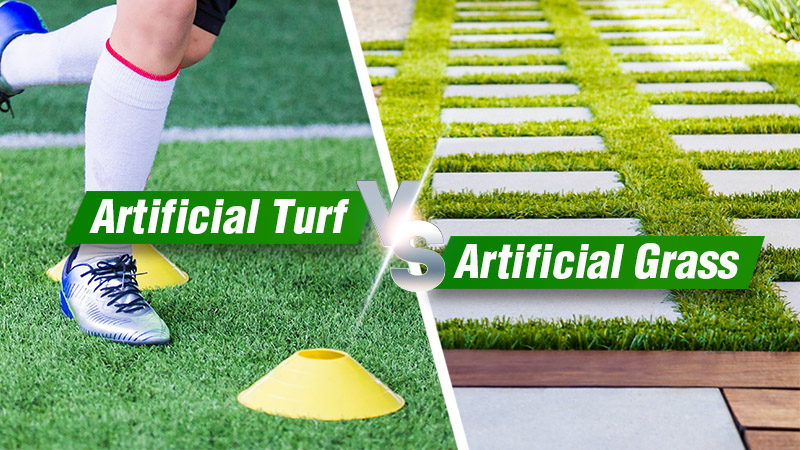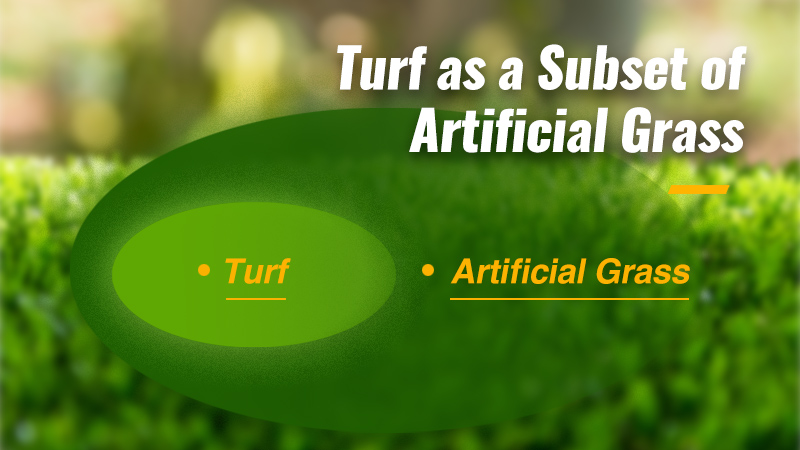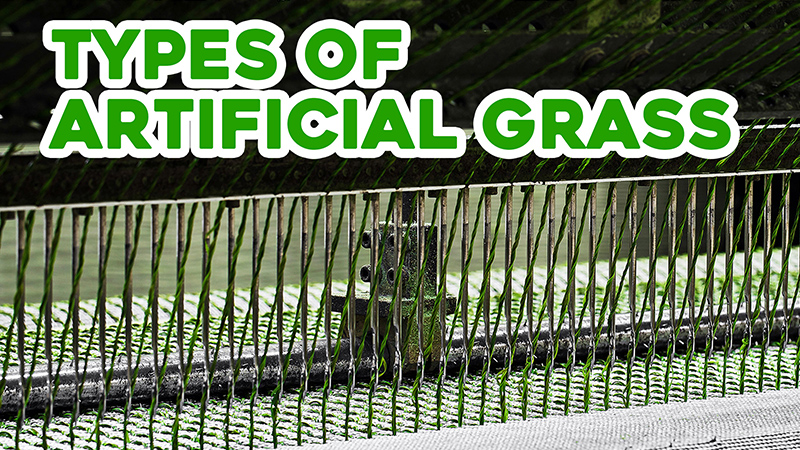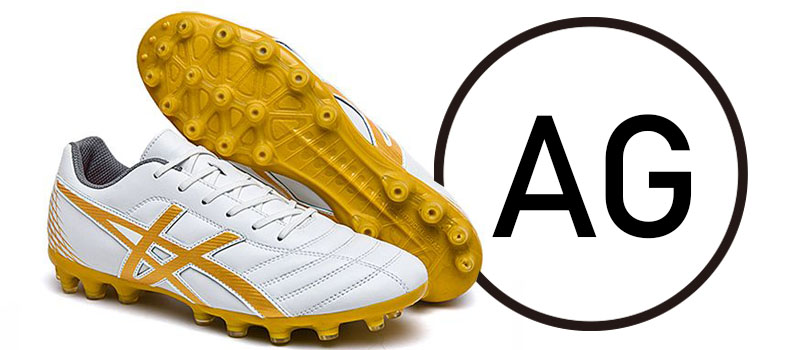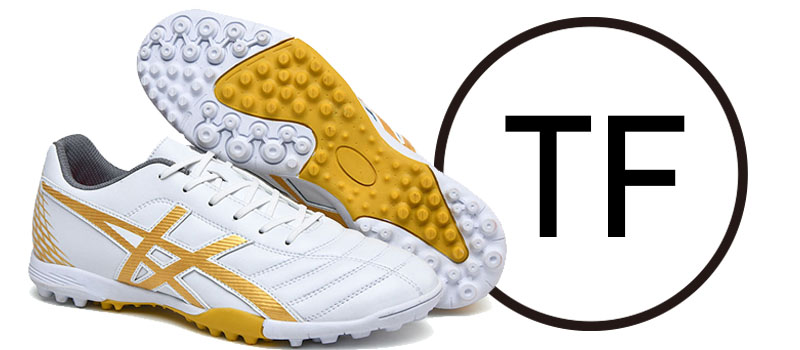Artificial Turf vs. Artificial Grass: What’s the Real Difference?
- 12/11/2024
The terms artificial turf and artificial grass are often used interchangeably, yet debates persist about their differences and applications.
Some believe artificial turf refers to shorter, denser surfaces commonly used for sports, while artificial grass describes longer, fluffier options ideal for landscaping. Others argue that the two terms essentially refer to the same thing.
In this article, we’ll explore the most common perspectives on artificial turf vs. artificial grass, uncover their shared benefits, and offer our professional insights. Ready to dig deeper? Let’s get started!
In this article:
Common Perspectives on Artificial Turf vs. Artificial Grass
Perspective 1: A Functional Focus vs. Aesthetic Appeal
One popular viewpoint is that artificial turf is designed for sports, while artificial grass is primarily used for landscaping and aesthetic purposes.
Artificial Turf: Frequently associated with sports fields, artificial turf is built for durability and heavy use. It provides a uniform surface that can withstand high traffic, making it ideal for a wide range of sports facilities, from school fields to training grounds.
Artificial Grass: On the other hand, artificial grass is typically linked with residential or commercial landscaping. It prioritizes visual appeal and comfort, designed to mimic natural grass while offering a low-maintenance solution for those seeking an attractive, evergreen outdoor space.
Perspective 2: Turf as a Subset of Artificial Grass
In this view, artificial grass is a broader term that includes various types of synthetic grass, such as artificial turf (used for sports fields) and longer, fluffier grasses for landscaping. Essentially, artificial turf is seen as a specific subset of artificial grass, designed for high-traffic, functional use.
Our Take on Artificial Grass and Turf—What Really Matters
In the artificial grass industry, the terms “artificial / synthetic turf” and “artificial / synthetic grass” are often used interchangeably. Both are engineered from man-made materials to mimic the appearance and functionality of natural grass.
Regardless of terminology, artificial grass and turf offer significant benefits:
- Water conservation: Particularly beneficial in arid regions, artificial grass reduces water usage dramatically compared to maintaining a natural lawn.
- Low maintenance: No need for mowing, fertilizing, or watering—saving time, effort, and money.
- Durability: Properly maintained, artificial grass can endure heavy foot traffic, harsh weather, and years of use with minimal wear.
- Allergen-free: Artificial surfaces eliminate allergens like pollen, offering relief for sensitive individuals.
- Cleanliness: No mud, no mess—a practical solution for athletes, pet owners, and families.
From a manufacturer’s perspective, artificial grass products are differentiated by technical specifications such as yarn type, pile height, face weight, and backing, rather than by whether they are labeled “grass” or “turf.”
Your intended use—whether sports, landscaping, or multipurpose—is the true guide to selecting the right product. No matter your climate, purpose, location, or budget, we have the right artificial grass product to meet your needs.
Related article: https://www.ccgrass.com/types-of-artificial-grass/
How to Choose the Best Artificial Grass for Your Needs?
Selecting the right synthetic grass depends on its intended use. Each application requires specific characteristics for durability, comfort, and performance.
For sports fields – Different sports require specialized turf systems. Since this is a major investment, it’s essential to choose based on field-specific needs, balancing performance and durability. Check out ‘The Different Types of Turf Ideal for Athletic Fields’
For homeowners’ gardens & yards – Lush, resilient turf with a 30mm-50mm pile height is perfect. Shorter turf works for high-traffic areas like backyards; taller turf is ideal for aesthetics in front yards. View residential turf options.
For commercial & public spaces – Select low-maintenance, durable turf that enhances aesthetics while withstanding heavy foot traffic. Discover commercial turf.
For putting greens – Opt for dense, short-pile turf (around 13mm) designed for smooth ball roll and lifelike playability. Browse putting green turf.
For pet owners – Go for durable, easy-to-clean turf with excellent drainage and odor control. A short pile height (~25mm) is ideal for frequent use and quick cleaning. Read our Pet Turf Guide.
For pools & surrounding areas – Well-draining, slip-resistant artificial grass provides a comfortable and safe surface. Additionally, chlorine-resistant turf prevents discolouration and damage from pool chemicals.
A Different Perspective: Artificial Grass & Turf in Soccer Footwear
A fascinating case arises when we look at the terminology used in soccer footwear. In this context, the terms “Artificial Grass” (AG) and “Turf” (TF) have specific meanings related to the type of surface they are designed for, which can often cause confusion for new buyers.
Artificial Grass (AG) Shoes
For: 3G pitches (40–60mm blades with rubber/sand infill).
Design: Conical/round studs made from plastic or rubber for impact absorption, traction, and deeper grip on 3G surfaces without damaging the blades.
Turf (TF) Shoes
For: 2G pitches (short, carpet-like surfaces).
Design: Short, closely spaced rubber nubs for stability on firm turf.
Pro Tip: Wearing the wrong shoes can damage surfaces or increase injury risk. Learn how to choose the right soccer shoes here.
Conclusion: Focus on Function, Not Just Terminology
The debate over “artificial turf vs. artificial grass” often boils down to semantics and context. Whether you’re choosing artificial grass or artificial turf, the key is to focus on intended use, product specifications, and performance requirements rather than the terminology itself.
At CCGrass, we offer a wide range of artificial grass and turf solutions designed to meet the demands of every application.
From high-performance sports fields to vibrant landscaping options, we have the expertise to help you make the best choice. Explore our collection and request a free sample by calling 86 25 6981 1666 or emailing [email protected] today.



